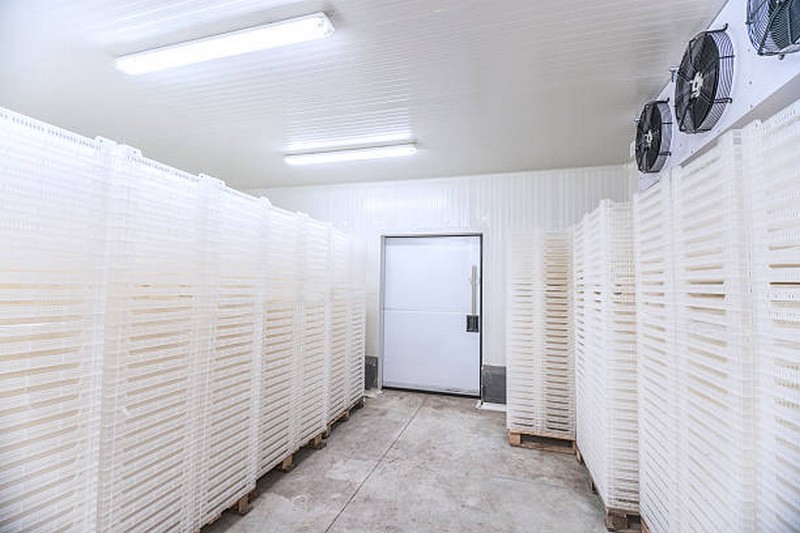Understanding the differences between walk-in cold rooms and walk-in freezers is critical for anyone in need of large-scale refrigeration systems. While they have similar shape and construction, identifying them based on temperature ranges and intended usage is important.
Introduction to Walk-In Cold Storage Solutions
Walk-In Cold Rooms: These are designed to maintain perishable goods at a cool temperature without freezing them. They typically operate within two temperature ranges:
- Range 1: Between 2°C and 12°C, ideal for products needed in the short term.
- Range 2: Between -2°C and +5°C, suited for items intended for use within a few weeks.
Walk-In Freezers: In contrast, walk-in freezers maintain temperatures around -18°C, allowing for the long-term preservation of products by deep freezing them.
Key Differences Between Walk-In Cold Rooms and Walk-In Freezers
- Temperature Settings:
- Walk-in cold rooms generally operate between 0°C and 5°C, catering to the preservation of items just above freezing point.
- Walk-in freezers, however, are set to much colder temperatures, often as low as -40°C, depending on the manufacturer’s specifications. Collaboration with a cold room specialist is crucial to determine the optimal temperature for your specific needs.
- Applications:
- The primary use of walk-in cold rooms is to store items that require a cool environment above freezing, such as fresh produce, dairy products, and certain medical supplies, allowing for immediate use without the need for defrosting.
- Walk-in freezers are designed for the long-term storage of a wide variety of products, utilizing extremely low temperatures to halt microbial growth and activity, thereby preserving the products in a frozen state.
- Storage Space and Customization:
- Both cold rooms and freezers offer comparable storage space. However, customization options like adjustable shelving and panel modifications can significantly enhance space efficiency and organization, catering to specific storage requirements.
- Safety and Security:
- Ensuring the safety of stored goods, particularly high-value items such as pharmaceuticals, is paramount. Both cold rooms and freezers can be equipped with advanced security systems to prevent unauthorized access and potential contamination.
Additional Considerations for Choosing Between Cold Rooms and Freezers
- Energy Efficiency: Opt for units with energy-efficient features to reduce operational costs and environmental impact.
- Maintenance and Upkeep: Regular maintenance is essential for optimal performance. Establish a schedule for professional inspections and cleaning.
- Regulatory Compliance: Ensure your chosen solution meets industry standards and regulations, especially for storing sensitive products like food and pharmaceuticals.
The choice between a walk-in cold room and a walk-in freezer is based on your unique storage requirements, such as the types of products to be stored, the needed temperature range, and the duration of storage. Understanding the underlying differences and taking into account the considerations listed above will allow you to make an informed selection that is consistent with your business aims and operational requirements. Remember that speaking with cold room and freezer specialists may provide personalized advice and solutions, ensuring that you invest in the appropriate form of cold storage for your purposes.

